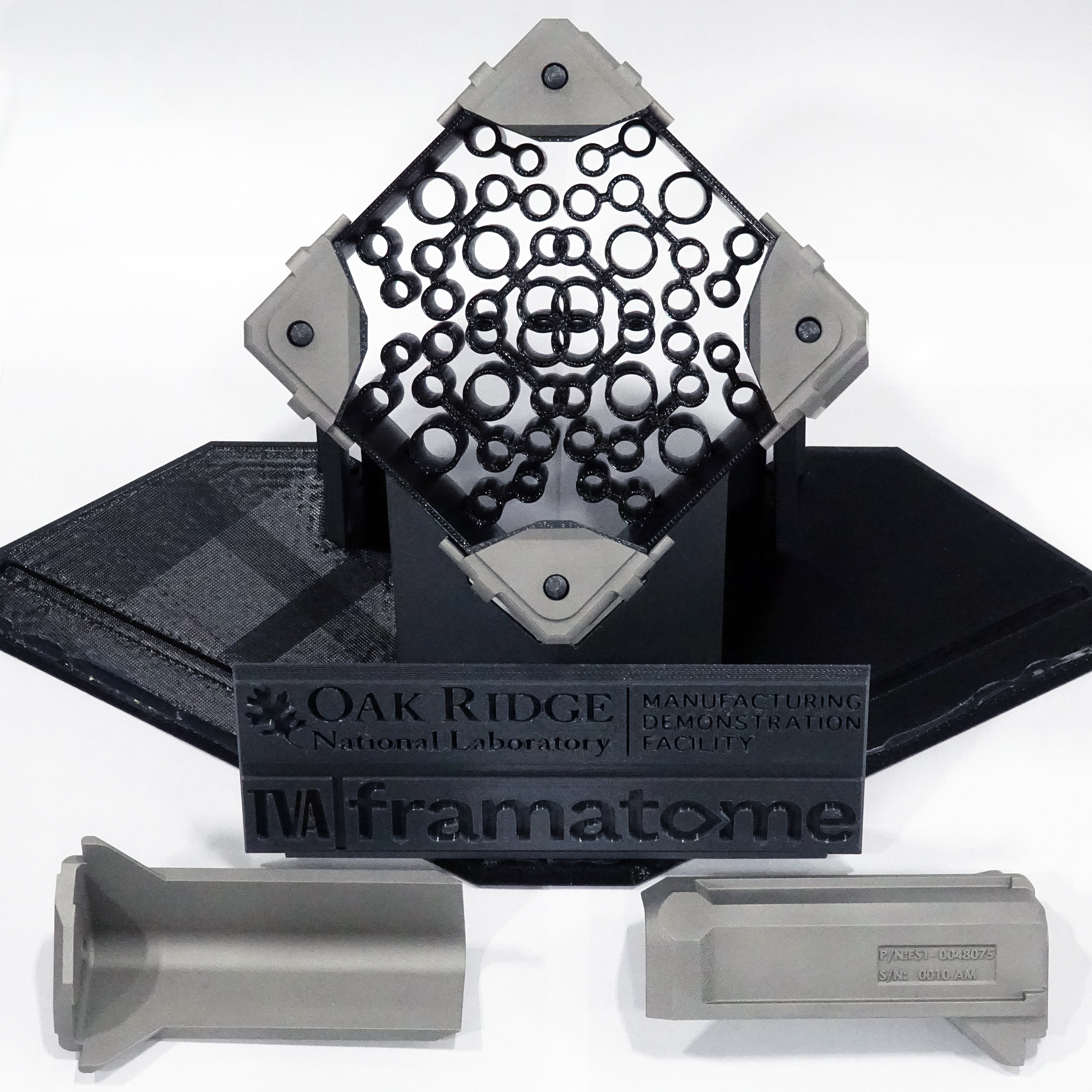3D printed parts developed by the Department of Energy at Oak Ridge National Laboratory (ORNL) could be tested in currently operating nuclear reactors as early as spring 2021.
Fuel assembly brackets developed by ORNL in partnership with Tennessee Valley Authority (TVA) nuclear fuel supplier Framatome, will reportedly be the first 3D printed safety-related components to be installed in a nuclear power plant.
ORNL recently partnered with Framatome and the TVA to introduce additively manufactured parts into nuclear reactors, using the same techniques being developed under the ORNL-led Transformational Challenge Reactor (TCR) demonstration program to explore faster and cheaper nuclear energy distribution within the US.
The TCR is a microreactor built via 3D printing and other advanced technologies that aims to be operational by 2024. ORNL’s TCR Director, Kurt Terrani, said: “We were asking ourselves, how do we add value along the way to the entirely of the nuclear community with this program?
“The whole purpose of the TCR is to show that you can bring new technologies and apply them to achieve more affordable nuclear power in a faster manner.”

Demonstrating AM’s capabilities
The 3D printed fuel assembly channel fasteners – a type of bracket fixed to the top of the assembly to hold the channel that guides coolant up through the fuel rods – are expected to be installed in TVA’s Brown’s Ferry nuclear power plant in Spring next year. In addition to being the first 3D printed parts to be installed in a nuclear reactor, they will also be the first physical parts with digital twins created using TCR’s advanced monitoring and artificial intelligence (AI) technologies, says ORNL.
Produced for the fuel assembly of a boiling water reactor at the Brown’s Ferry plant, the channel fastener part was chosen for its geometric simplicity and “low risk”, making it an ideal demonstration of 3D printing’s capabilities in this area.
“It wasn’t a challenging component,” said Fred List of ORNL’s Physical Science Directorate. “What we were trying to figure out is some of the simple things additive manufacturing needs to overcome to make that model very precisely – layer by layer – with minimal distortion.”
Using a micro-welding process, the shape of the channel fastener can be altered in minuscule increments with the potential to provide a more cost-effective way to manufacture the part, which is traditionally cast and machined. The 3D printing of the part is also serving as a test case of TCR’s digital platform that is exploring ways to quickly certify the quality of components designed for nuclear reactors. Combining additive manufacturing and AI to monitor production processes and certify part quality is a key goal of the TCR program.
Terrani continued: “For the first time, we are putting a part into a Nuclear Regulatory Commission-licensed reactor that has all the digital manufacturing data behind it. This is one of the first steps in our coordinated efforts with the regulator and the nuclear vendors to prove that a new and greatly accelerated approach for part qualification is possible.”

Advancing the nuclear sector
One of the core aims of the TCR project is to pave the way for the use of 3D printing, computational modeling, and AI in the nuclear industry, in order to reduce manufacturing costs and lead times, while improving safety and accessibility. According to the World Nuclear Energy Association, nuclear energy provides nearly 20 percent of the US’ electricity supply, however all of the reactors providing it are based on 70-year-old light water technology.
ORNL launched the TCR program with the aim of building a nuclear reactor core using the latest advancements in science and manufacturing, including Direct Energy Deposition (DED) 3D printing, while also encouraging the nuclear industry to adopt modern technology approaches.
In September, Purdue University received an $800,000 grant from the US Department of Energy (DoE) to become key contributors to the TCR Demonstration Program and accelerate the development of the nuclear reactor core. Purdue is developing an AI model to ensure nuclear-grade quality of the TCR microreactor’s components, which will utilize machine learning paradigms to fine-tune and optimize additive manufacturing parameters such as print speed and melting temperature.
Last month, ORNL announced the advancement of a new 3D printing technology specifically for the production of reactor components, developed in partnership with nuclear and fuel component supplier BWX Technologies (BWXT). The process enables the 3D printing of high-temperature alloys and refractory metals which are essential for the safe operation of nuclear reactors.
Subscribe to the 3D Printing Industry newsletter for the latest news in additive manufacturing. You can also stay connected by following us on Twitter and liking us on Facebook.
Be sure to subscribe to the Another Dimension podcast on your chosen podcast player to make sure you never miss an episode.
Looking for a career in additive manufacturing? Visit 3D Printing Jobs for a selection of roles in the industry.
Featured image shows the fuel assembly brackets are the first 3D printed safety-related components to be inserted into a nuclear power plant. Image via Fred List/ORNL, US DoE.



